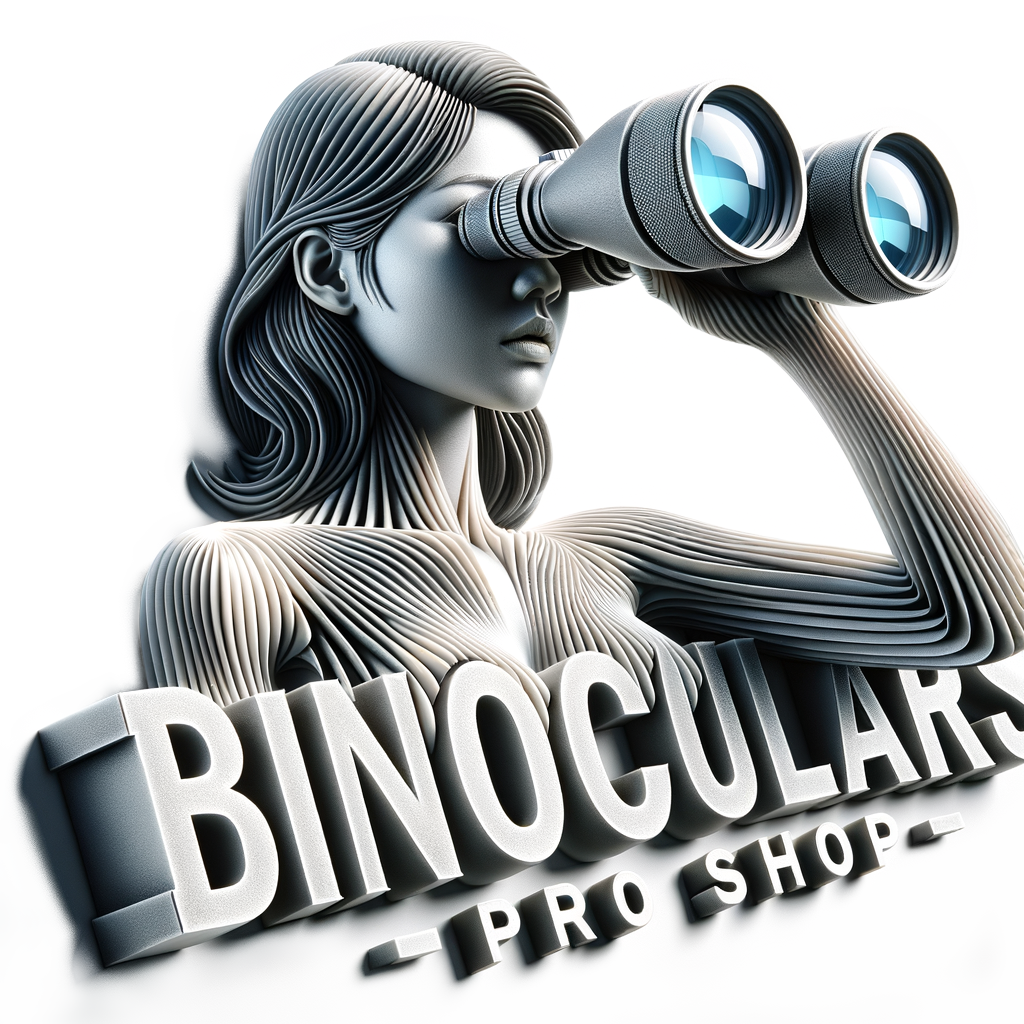Let’s explore the key elements that make up a monocular, a powerful tool that brings the world closer to you. Whether you’re an avid nature enthusiast or simply seeking a compact and versatile optical device, understanding the main components of a monocular will enhance your experience and make it easier to choose the perfect one for your needs. So, let’s embark on this informative journey and discover the fascinating inner workings of a monocular. A monocular is a compact and portable optical device that consists of various components working together to provide a clear and magnified view of distant objects. Understanding the different parts and their functionalities is essential for choosing the right monocular that suits your needs. In this overview, we will delve into the various components of a monocular, such as the body and design, objective lens, eyepiece, focusing mechanism, prisms, eyecups, lens coating, field of view and magnification, as well as the accessories that enhance its usability.

Overview of a Monocular
Definition of a Monocular
A monocular is a single-tube optical instrument that is used to view distant objects with one eye. It is a compact and lightweight alternative to binoculars, making it ideal for outdoor activities such as hiking, birdwatching, or sporting events. With its ability to provide magnification, a monocular allows users to observe objects that are far away in great detail, all with the convenience of using just one eye.
Uses and Functionality of a Monocular
Monoculars are versatile tools that find applications in a wide range of activities. Whether you are exploring nature, observing wildlife, or simply enjoying the beauty of the great outdoors, a monocular can enhance your experience by bringing distant objects closer. With their compact size, monoculars are also popular among travelers and outdoor enthusiasts who prefer a lightweight and portable option for magnified viewing.
Monocular versus Binoculars
While both monoculars and binoculars serve similar purposes, there are distinct differences between the two. Binoculars consist of two tubes that allow for binocular vision, providing greater depth perception and a wider field of view. On the other hand, monoculars offer the advantage of being light, compact, and budget-friendly. They are also easier to handle with one hand and can fit into smaller spaces, making them ideal for those who prefer a single-eye viewing experience.
External Features of a Monocular
Body and Design
The body and design of a monocular play a crucial role in its overall usability and comfort. Monoculars often have a cylindrical shape, allowing for a comfortable grip. The exterior of the monocular is usually made of durable materials such as rubber or metal to provide protection against impact and ensure a firm grip, even in challenging weather conditions.
Size and Weight
One of the significant advantages of a monocular is its compact size and lightweight nature. Most monoculars are designed to be portable and easy to carry, making them a preferred choice for those who value convenience. The size and weight of a monocular can vary depending on its intended use and features, so it is essential to consider your specific needs when selecting a monocular.
Material Used
The material used in the construction of a monocular can significantly impact its durability and performance. Common materials include aluminum, which is lightweight and resistant to corrosion, and rubber armor, which provides shock absorption and a secure grip. The choice of material can also affect the overall aesthetics of the monocular, with different finishes available to suit individual preferences.
Water and Fog Resistance
Many monoculars come with water and fog resistance features, allowing them to be used in various weather conditions without compromising their functionality. Ingress protection (IP) ratings indicate the monocular’s ability to withstand water and dust intrusion, with higher ratings indicating better resistance. Fog-proofing is achieved through the use of nitrogen or argon gas filling, which prevents internal fogging caused by temperature changes.
Objective Lens
Definition and Function of Objective Lens
The objective lens is a key component of a monocular responsible for gathering light and forming the initial image. It is located at the front of the monocular and is typically larger in size than the eyepiece. The objective lens collects light from the object and focuses it to produce a clear and magnified image for the viewer.
Material and Coating of Objective Lens
The material used in the objective lens can affect factors such as light transmission, clarity, and overall image quality. High-quality objective lenses are often made of special glass materials that minimize chromatic aberration and enhance light transmission. Additionally, objective lenses may feature coatings such as anti-reflective coatings to minimize glare and improve image contrast and brightness.
Objective Lens Size and its Effect on View Quality
The size of the objective lens directly impacts the amount of light that can enter the monocular. A larger objective lens allows greater light gathering capability, resulting in brighter and clearer images, especially in low-light conditions. However, larger objective lenses also contribute to a bulkier and heavier monocular, so it is essential to strike a balance between lens size and portability based on your specific needs.
Eyepiece
Definition and Role of Eyepiece
The eyepiece is the component of a monocular through which the viewer looks to observe the magnified image formed by the objective lens. It is located at the rear end of the monocular and is responsible for magnifying the image produced by the objective lens, making it suitable for human eyes to perceive.
Different Types of Eyepieces
Monoculars can feature various types of eyepieces, each with its own advantages and characteristics. Common types of eyepieces include the spherical, achromatic, or aspheric eyepieces. Spherical eyepieces are the most basic, while achromatic eyepieces correct chromatic aberration for improved image quality. Aspheric eyepieces are designed to minimize distortion and provide a wider field of view.
Eyepiece Coatings
Similar to objective lenses, eyepieces can also feature coatings to enhance image quality. Anti-reflective coatings on eyepieces help reduce glare, improve light transmission, and enhance color fidelity. Coatings such as multi-coating or fully multi-coating can significantly contribute to sharper and more vibrant views through the monocular.

Focusing Mechanism
Role of Focusing in a Monocular
Focusing is a critical aspect of using a monocular as it allows the viewer to adjust the image to achieve optimal clarity and sharpness. By adjusting the focus, you can compensate for differences in eyesight and bring the observed object into clear view.
Manual Focus versus Auto Focus
Monoculars can feature either manual focus or auto focus mechanisms. Manual focus requires the user to adjust the focusing knob until the desired sharpness is achieved, offering greater control over the focus. On the other hand, auto focus monoculars use built-in technology to automatically adjust the focus, making them ideal for capturing fast-moving objects or situations where a quick adjustment is necessary.
Construction and Design of Focusing Knob
The focusing knob is a physical control located near the eyepiece or in the central area of the monocular body. It allows the user to adjust the focus by rotating the knob to move the internal lens elements. The design of the focusing knob can vary, with some monoculars featuring a larger and more textured knob for easy gripping and precise adjustments.
Prisms
Function of Prisms in a Monocular
Prisms are critical components in a monocular that help correct the orientation of the image and provide a more comfortable viewing experience. Without prisms, the image through the monocular would appear upside-down and reversed. Prisms ensure that the observed image appears upright and properly oriented.
Types of Prisms – Roof Prism and Porro Prism
Two primary types of prisms are commonly used in monoculars: roof prisms and Porro prisms. Roof prisms are more compact and generally result in a straight-line design, contributing to a slim and streamlined monocular. Porro prisms, on the other hand, offer a wider and more immersive view, often with greater depth perception, due to their offset design.
Material and Coating Used in Prisms
Prisms are typically made of glass materials with specific optical properties. High-quality monoculars often feature prisms made of BaK-4 glass, known for its superior light transmission properties. Prisms may also have phase-corrective coatings applied to them to improve image contrast and resolution, resulting in a more vivid and detailed view.

Eyecups
Purpose of Eyecups
Eyecups are designed to provide a comfortable viewing experience by positioning the viewer’s eye at the proper distance from the eyepiece. They serve to block out stray light, enhance the field of view, and provide stability while using the monocular. Eyecups also contribute to eye relief, which is the distance between the eyepiece and the viewer’s eye.
Types of Eyecups – Twist-Up and Fold-Down
Monoculars often feature two types of eyecups: twist-up and fold-down. Twist-up eyecups can be adjusted to different positions, accommodating users who wear glasses or those who prefer a different distance between the eye and the eyepiece. Fold-down eyecups are fixed in position and provide a stable platform for viewing, ensuring consistent eye relief for non-eyeglass wearers.
Material and Comfort of Eyecups
Eyecups are usually made of soft and comfortable materials such as rubber or silicone to provide a pleasant viewing experience. The choice of material can affect the level of comfort and eye relief, so it is crucial to consider the ergonomics of the eyecups for extended viewing sessions. Properly designed eyecups can prevent eyestrain and promote a relaxed and enjoyable viewing experience.
Lens Coating
Importance of Lens Coating
Lens coating plays a vital role in improving image quality by reducing glare, increasing light transmission, and enhancing color fidelity. Coatings applied to the objective lens and eyepiece work together to minimize unwanted reflections and improve overall image contrast and brightness. The type and quality of lens coatings can significantly impact the viewing experience and the monocular’s performance in various lighting conditions.
Types of Lens Coatings – Fully Coated, Multi-Coated, Fully Multi-Coated
There are several types of lens coatings commonly used in monoculars: fully coated, multi-coated, and fully multi-coated. Fully coated lenses have a single layer of anti-reflective coating applied to one or both surfaces of the lens. Multi-coated lenses feature multiple layers of coating, providing better light transmission and image clarity. Fully multi-coated lenses have the highest level of coating, resulting in superior light transmission, image brightness, and color accuracy.
Field of View and Magnification
Definition of Field of View
The field of view refers to the width of the observable area when looking through the monocular. It is often measured in degrees or the linear distance in feet or meters at a certain distance. A wider field of view allows you to see more of the surrounding area, making it easier to track moving objects or observe a broader scene.
Magnification Power of Monocular
The magnification power of a monocular determines how much larger an object appears when viewed through the monocular compared to the naked eye. Monoculars typically have a fixed magnification or a zoom feature that allows for adjustable magnification. The magnification power of a monocular is usually indicated by a number (e.g., 8x, 10x), with higher numbers providing greater magnification.
How Field of View and Magnification Affect Image Quality
The field of view and magnification power are interconnected and both affect the image quality when using a monocular. Higher magnification can result in a narrower field of view, making it more challenging to track objects or follow fast-moving subjects. Conversely, a wider field of view can provide a more immersive and enjoyable viewing experience, especially for observing landscapes or large areas. It is essential to consider your specific needs and strike a balance between magnification and field of view to achieve the desired image quality.
Monocular Accessories
Straps and Carrying Cases
Straps and carrying cases are essential accessories that ensure the safety and convenience of carrying the monocular. Straps allow you to hang the monocular around your neck or shoulder, providing easy access when needed. Carrying cases protect the monocular from scratches, dust, and other potential damage while storing or transporting it. Look for durable and comfortable straps and cases that fit your monocular’s size.
Cleaning Kits
Cleaning kits are vital for maintaining the optical performance and longevity of your monocular. Dust, fingerprints, and smudges can impair the image quality, so regular cleaning is essential. Cleaning kits often include a lens brush or air blower to remove loose particles, a microfiber cloth to gently wipe the lenses, and lens cleaning solution for more thorough cleaning when needed. Keeping your monocular clean ensures optimal viewing experiences.
Tripods and Mounts
Tripods and mounts are useful accessories for those who require steady and prolonged observation or want to capture steady images or videos. Tripods provide a stable platform for the monocular, allowing for hands-free operation and reducing hand fatigue. Some monoculars come with built-in tripod adapters, while others require separate tripod mounts to attach the monocular securely.
Adapters for Smartphones
With the increasing popularity of smartphone photography, adapters for smartphones have become popular monocular accessories. These adapters allow you to attach your smartphone to the monocular, enabling you to capture magnified images or record videos using your phone’s camera. Smartphone adapters broaden the functionality of your monocular and enable you to share your observations with others through photos and videos.
In conclusion, understanding the various components of a monocular is essential for selecting the right one that meets your specific needs. From the body and design to the objective lens, eyepiece, focusing mechanism, prisms, eyecups, lens coating, field of view, magnification, and accessories, each component plays a crucial role in the overall performance and usability of a monocular. Consider your preferences, requirements, and budget to make an informed choice and enhance your outdoor adventures and observation experiences with a monocular.
